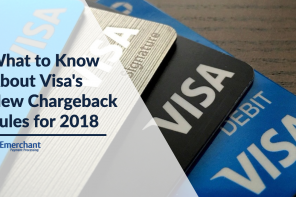Bank identification numbers, also commonly referred to as BIN numbers, are the first four to six numbers that appear on a credit card. They are extremely important in terms of sales and payments and help to distinguish one banking or credit card institution from another. Mastercard has long held what are known as 5-series BIN numbers (identification numbers that begin with 5 as the first digit). However, they have also recently acquired a set of 2-series numbers (BIN numbers starting with 2) that they will be using as account identifiers.
This BIN expansion for Mastercard comes as a necessity as there are a finite number of 5-series numbers that they can utilize currently. However, many card issuers, merchants, and businesses wonder what the 2-series BIN migration will mean for them and how they should prepare. In order to ensure that you are ready for the 2-series BIN migration, we’ll explain in more detail what the 2-series BIN migration implicates and what you can do to be prepared.
How the 2-Series BIN Migration Affects Transactions
In theory, the 2-series BIN numbers will work just like the 5-series BIN numbers that Mastercard already uses in their previously issued credit cards. This means that the 2-series BIN numbers should not affect transactions at all. Of course, in order for this to happen merchants and card issuers alike will need to make some adjustments to ensure that all of their systems are compliant with the BIN migration changes that will occur.
Compliance Requirements
All merchants will need to be compliant with the 2-series BIN migration as of January 1st, 2017. This means that all software and processes will need to be updated to accept Mastercard accounts as having either 5-series or 2-series BIN numbers.
Consequences for Non-Compliance
Mastercard wants to make sure that all of their customers can easily use their cards and accounts without hassle or trouble. As such, there are consequences to merchants who are not compliant with the BIN migration by January 1st, 2017. They will be running various field tests to check as to whether 2-series BINs are accepted at a certain business without trouble. If not, they will issue fines up to $25,000 per month to businesses and merchants until they become compliant with the new system.
How to Ensure Successful 2-Series BIN Migration
The ways in which you become compliant and successfully adapt to the 2-series Mastercard BIN migration depend on the types of systems that you use to process payments. If you use a third-party software to process your payments (i.e. one not developed by your own company), the key will be to ensure that you have the latest version with the latest updates of that software. You will likely need to confer with your software provider to ensure that they have made adjustments to meet the BIN migration requirements.
Once you are sure that your payment processing software is up-to-date, you will want to test the system out (preferably before the compliance deadline) to verify that you are able to properly process a 2-series BIN transaction.
On the other hand, if you have your own uniquely developed payment integration, you need to ensure that your programmers are on top of the upgrade process and that they test 2-series BIN numbered accounts in every type of transaction your company engages in. Because your company has full control of your software, you are going to be better able to ensure that your migration process is successful and test it out in a variety of scenarios.
With all of this information in mind, you can now better understand the Mastercard 2-series BIN migration process and what it will mean for you and your organization.




